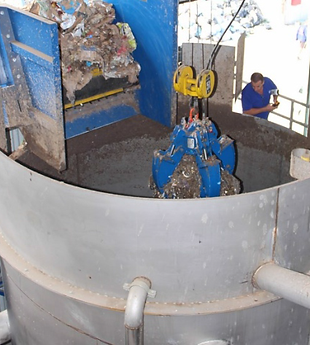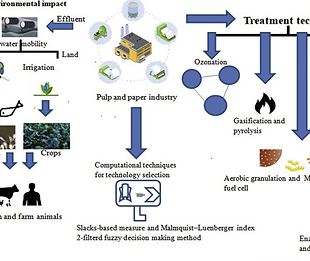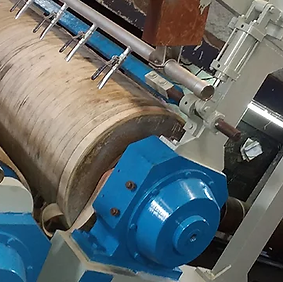

Our Products
Product Profile

De-inking is the removal of ink from paper during recycling, ensuring high-quality recycled paper products. It involves separating inks and contaminants from the paper pulp for sustainable paper production.
A. Inorganic Surfactant
B. Organic Solvent
C. Organic Surfactant
D. Enzyme
De - Inking

cooking aid refers to a chemical additive or agent used during the pulping process to improve the efficiency and quality of the cooking process. Pulping is the initial step in the papermaking process, where raw materials such as wood chips or other fibrous materials are chemically treated to separate the fibers and produce
Cooking Aid ( Surfactant Base)

In the context of pulping, a slushing aid refers to a chemical additive used to aid in the separation and dispersion of fibers during the pulping process. Pulping is the initial step in papermaking, where raw materials such as wood chips or other fibrous materials are broken down into individual fibers to produce pulp.
Slushing Aid

Refining aid in pulping refers to chemical additives used in the papermaking process to enhance the refining of pulp fibers. Refining is a mechanical process in which pulp fibers are mechanically treated to improve their bonding and strength properties, resulting in higher-quality paper products.
Refining Aid

Dry strength resin, also known as dry strength additives or dry strength agents, is a chemical additive used in the papermaking process to enhance the strength properties of paper without the need for additional moisture.
DSR (Dry Strength Resin)

Butane Polymers supply cationic, organic coagulants. Organic coagulants are usually in liquid form. Concentrations in activity range between 8 and 70%, with the most common concentrations of activity between 40 and 50%
Coagulants

Entrained air and surface foam can cause a variety of quality, production and environmental problems for industrial operations. To help industrial operations overcome these issues, Butane Polymers offers a full range of foam control agents and antifoam agents.
Defoamer

Wash aid refers to a chemical additive used during the washing process to improve the efficiency and effectiveness of pulp washing. Pulping is the initial step in papermaking, where raw materials such as wood chips or other fibrous materials are broken down into individual fibers to produce pulp.
Wash Aid

Application of a thin layer of chemicals, known as coating agents or additives, to the surface of tissue paper. This process is typically carried out after the tissue paper has been formed and dried but before it is wound into rolls or folded into sheets.
Coat

A process where a coating or treatment is applied to the surface of tissue paper to make it non-stick or resistant to adhesion. This treatment is often referred to as a "release agent" or "anti-adhesive coating."
Release

Wet strength resin is a chemical additive used to enhance the strength and integrity of tissue paper when it is wet or damp. This additive is particularly important for tissue paper products that come into contact with moisture, such as facial tissues, paper towels, and napkins.
WSR

A softener based on a co-polymer is a chemical additive used to enhance the softness and tactile feel of tissue paper products. Softeners are applied to tissue paper during the papermaking process.
Softener (Co-Polymer Base)

A fragrance creator used in tissue paper making to impart a pleasant and subtle fragrance to tissue paper products. OFC is a specialized chemical additive that is designed to release fragrance when activated by moisture or friction, such as when the tissue paper is used.
OFC (Fragrance Creator)

Adding high yield pulp to improve paper bulk is currently the most effective method widely used by paper mills. Bulk is a very important property of paper. High-bulk paper can maintain the necessary stiffness, reduce fiber consumption, save pulp costs, and improve bulk.
Bulk Improvement

The interply bonding strength of paper is the force or energy which is required to separate the layers of a multi ply sheet of paper or paperboard. This adhesion of plies is developed by pressing (couching) newly formed plies to gether while still wet.
Ply Bond Enhancer

Optical brightening agents (OBAs) are chemicals added to paper to enhance its brightness and whiteness. These agents work by absorbing ultraviolet light and re-emitting it as visible blue light, which makes the paper appear brighter and whiter.
OBA ( Optical Brightening Agent)

Zirconium ammonium carbonate aqueous solution is commercially available as a zirconium aqueous solution for crosslinking water-soluble polymer compounds such as polyvinyl alcohol and polyacrylic acid, and is widely used in fields such as papermaking, metal surface treatment, adhesives and optical films. .
AZC

Kraft pulping uses heat and chemicals to pulp wood chips for making paper. This reaction produces gaseous sulfur compounds called “total reduced sulfur” or TRS gases. The odor associated with TRS gases is often described as “rotten cabbage” or “rotten eggs.”
New Generation Odour Control Program

Butane Polymers are involved in producing specialised grade of Starches for Pulp and Paper Industry.
We have two starch modification plant in Asia Pacific
One is in India , 2nd is in Thailand.
Starch ( Imported Tapioca Starch)

Butane Polymers are manufacturing IP Grade of Tapioca Modified Surface Starch, It will help to develop permanent strength of the paper, also help to reduce odour of the paper.
Modified Surface Starch ( I P Grade)

Butane Polymers are producing Esterfied starches through esterification technology.
Esterified Starch ( I P Grade)

Butane Polymers are producing Biopolymer base Cationic Starch for different grade of paper qualities.
Cationic Starch ( Bio Polymer Base)
